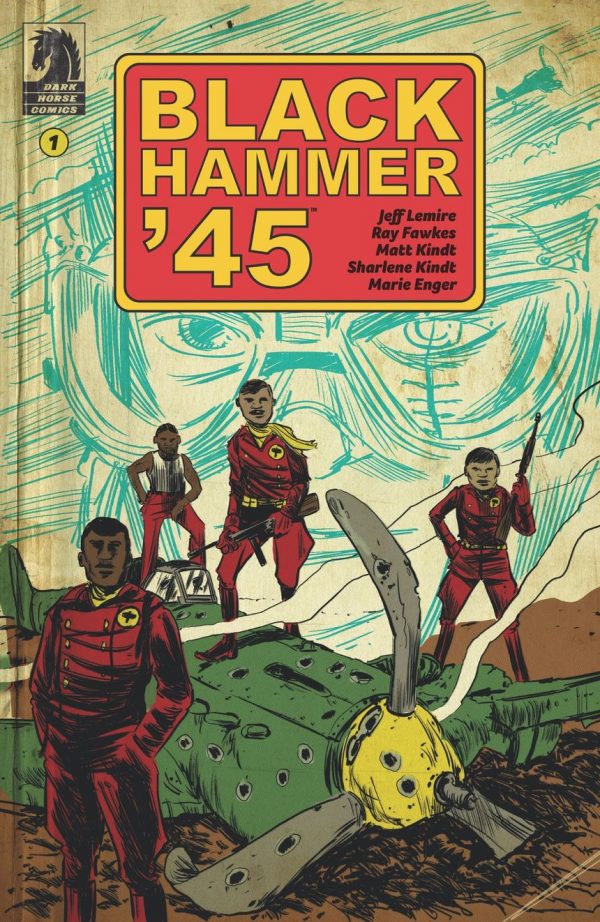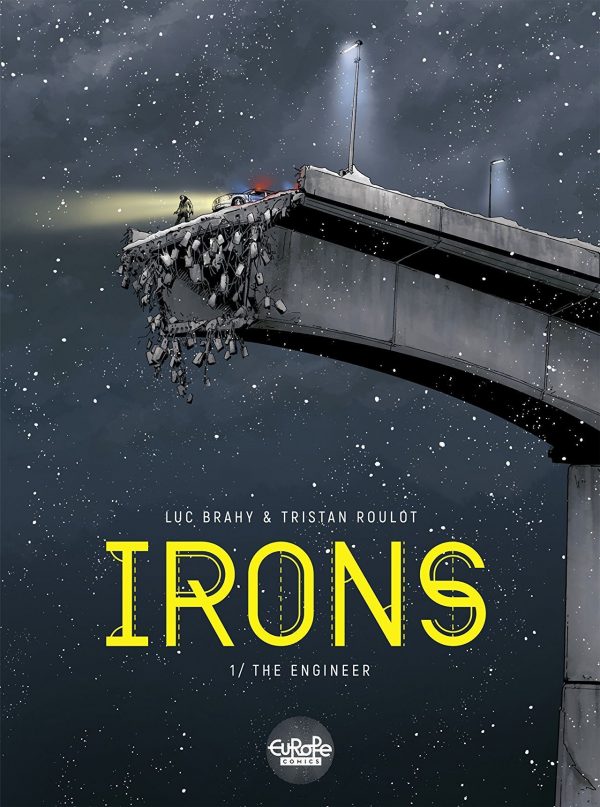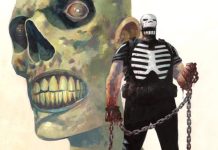Black Hammer ’45 #1
Written by Ray Fawkes
Illustrated by Matt Kindt
Colored by Sharlene Kindt
Lettered by Marie Enger
Either as inspiration from or competition with the Big Two’s long histories as the primary superhero universes in comics, every once in awhile someone will come along and try to fashion their own. Sometimes this is done with new characters, other times with revived Golden Age heroes, but no matter the effort, they are always lacking something to me. Maybe it’s the history that the Big Two can pull from, twist and bend into new narrative pathways.
Jeff Lemire’s Black Hammer universe is the only one that has figured out how to solve the problem. In lieu of actual history, Lemire has worked to create an implied one, and present each iteration of the universe in a deliciously obtuse fashion that focuses on characters as much as universe-building and which makes you want to dig further for what you feel is already there, he just hasn’t told you yet.
So far, Lemire’s universe has mostly focused on superheroes, but with Black Hammer ’45, the first title to not be written by Lemire, though he collaborated on concocting the storyline, we switch to another popular genre of comic book from the past — war comics. Think the Black Hawks or the Unknown Soldier in this adventure with the Black Hammer Squadron, a collection of ace World War II pilots.
Focusing on their last mission at the end of the war, the Black Hammer Squadron goes to face off with the deadly Ghost Hunter, the deadly Nazi pilot in his white Stuka. But this is all being recalled by squadron members in the future, gathering as elderly men on an important day of remembrance in a mysterious ritual.
Looking back to their war days, though, Fawkes does well gathering the mythology of the Black Hammer universe in the 1940s through conversations between the pilots, creating people and incidents that begin to build into something solid by the end of the book. And Matt Kindt’s artwork, which is always welcome is top form here, his unique illustrative style servicing the time period and giving the past a storybook quality that adds to the presentation. This is only the first issue, so it’s all set-up, but past Black Hammer books have shown themselves to not always take the expected direction, but I wouldn’t even know what the expected direction is in this unique effort.
Irons Volume 1: The Engineer
Written by Tristan Roulot
Illustrated by Luc Brahy
Colored by Hugo Faco
Europe Comics
You don’t generally read comics where the hero’s superpower is that he’s a structural engineer specializing in bridges or where the adventure unfolds in Prince Edward Island and involves a lot of information about the fishing industry. And when you hear about such a thing, you don’t expect it to be an alluring, straightforward throwback that takes all these elements into a generally fascinating mystery.
Jack Irons, the hero of Irons, is a surly, somewhat mean-spirited seeming guy whose past experience of tragedy seems to have rubbed him the wrong way when dealing with people. One night while crossing the Confederation Bridge out of Prince Edward Island into New Brunswick, there’s a sudden collapse and Irons get pulled into the local investigation that highlights bad blood between the fishing community in Charlottetown and the corporation that owns the bridge, stemming from a tragic fishing boat accident years before.
Pulling from the curt city person trapped in the naive rural setting trope that plenty of mysteries offer, Irons doesn’t break any new ground in that area, but it does manage to make something out of the unusual elements it’s chosen to build a mystery around. Though Irons’ negativity is on continual display, it’s the actual investigation that takes center stage over the personalities featured, though without settling on two-dimensional characters to allow it to all play out.
Irons plays out like a throwback to comics of the past, like the hardboiled European genre of detectives and adventurers like Corto Maltese, or the strips featured in British boy’s comics of the ’60s and ‘70s, and that’s part of its charm. But it doesn’t entrench itself in any nostalgia and even as it portrays the extreme machismo inherent in those comics, it makes a point of not allowing to show off without some critique. I have no idea what kind of second adventure a structural engineer could blunder into, perhaps something thrilling in a skyscraper, but if they can match a scenario with a decent mystery, the second volume of Irons will probably be worth checking out.









So is Black hammer just a riff on Blackhawk??
Comments are closed.